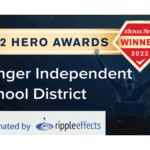Having a campus-wide communication ecosystem is imperative, and school district leaders have no higher priority than to create secure and informed campus environments.
Being able to initiate a controlled emergency notification protocol to alert, notify and monitor directly from a mobile device, classroom audio system, or interactive flat panel is essential.
An eSchool News panel of experts, including Brent Thrasher, Instructional Technology Coordinator at Overton County Schools and Todd Eddy from Galaxy Next Generation, offers insights into how to make better decisions, prevent risk, and strengthen communication between faculty, administration, and first responders during an active threat.
Topics include:
- How to immediately notify teachers of a lockdown through software alerts.
- How to instantly notify law enforcement and first responders.
- How to monitor communication within your entire ecosystem using one software platform.
Related:
3 keys to school communication and community-building
More from eSchool News
We all know the problem. There is a frightening shortage of special education teachers and it’s getting worse. Even prior to the pandemic, 98 percent of school districts and 49 states reported that they had a shortage and a recent RAND report found that six months into the pandemic over one-third of school leaders were experiencing special education teacher vacancies.
School districts continue to prioritize expanding summer learning and enrichment offerings, adding specialist staff such as mental health personnel and reading specialists, and investing in high-quality instructional materials and curriculum, according to a survey administered by AASA, The School Superintendents Association.
Higher education institutions and K-12 schools are still reeling from the changes made during the pandemic, and the looming threat of a ransomware attack continues. Sixty-four percent of higher education institutions were hit by ransomware in the last year – a significant increase from 44 percent the previous year.














